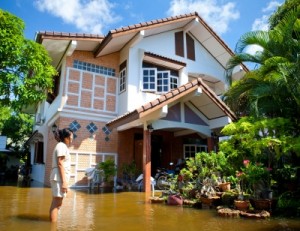 It is generally recognized that the soils that underlay most houses and buildings in Central Texas are, moisture-sensitive clays. There are dozens of sub-categories of these clays but the major characteristic all have in common is that they shrink when drying out and swell when taking-on moisture. These clays behave this way whether they are in the field or beneath buildings acting as foundation support soils. Most problems with foundations built on these soils are caused by non-uniform shrink/swell of foundation soils, which causes non-uniform settling or up-heaving.
It is generally recognized that the soils that underlay most houses and buildings in Central Texas are, moisture-sensitive clays. There are dozens of sub-categories of these clays but the major characteristic all have in common is that they shrink when drying out and swell when taking-on moisture. These clays behave this way whether they are in the field or beneath buildings acting as foundation support soils. Most problems with foundations built on these soils are caused by non-uniform shrink/swell of foundation soils, which causes non-uniform settling or up-heaving.
Foundation distress or damage from this natural soil behavior can be controlled by managing the uniformity of foundation soil moisture; in such cases, the goal is to maintain soil moisture at a uniform and constant condition regardless of the weather. This may mean re-grading yard surfaces near the foundation edges to promote positive drainage away from the building. Such grading can be accomplished by either removing soil to create a drainage swale, and/or by adding fill dirt adjacent to the foundation edge and sloping outward. Here, take care to not raise soil level to approach the height of wood trim or masonry weep holes (usually in the bottom course of stone or brick walls). Also helpful is the use of rain gutters to collect and redistribute rainwater to locations that dependably drain away from the foundation edges.
During hot dry weather moisture needs to be added to replenish evaporation losses and plant root removal of soil moisture. This can be accomplished in many ways depending on available moisture delivery systems; for example, yard sprinkler systems can be adjusted to provide sprinkled water coverage for these purposes, and the use of soaker hoses within 10-12 inches of the foundation edge also can be effective. By whichever method used, take care to add sufficient-but-not-too-much water; if surface soil cracks become visible first near the southwest foundation edges, then increase the amount of added moisture in those areas.
In Central Texas, this usually amounts to operating soaker hoses 20-30 minutes daily during the hottest dry summer periods (shorter periods at areas less likely to show soil cracks). Avoid watering to the point of standing pools of water or creating perpetually muddy surface conditions. Observe for soil cracks to learn how long after rain showers to wait before resuming addition or irrigation moisture. Where soaker hoses are used, these can be placed on the soil surface or covered-over by soil added to form a graded drainage surface sloped away from the foundation. A desirable soil slope is 4-5 inches higher at the foundation edge and sloping outward to zero at least 4 ft. away.
The soil-drying effect of trees and shrubs often goes underestimated; the differences in moisture consumption by the many varieties of trees and shrubs often are not recognized. It is well to realize that the plants and trees noted for fast growth also usually extract the most soil moisture (Arizona Ash, Tallow, Mimosa, and Willow trees, and Photinia and Boxwood shrubs, to name a few). Of course, the goal of many landscaping treatments is a quick show of growth, but the faster-growing, more thirsty plant species should not be used near enough to the building to affect foundation soil moisture.
The presence of trees or shrubs carries the responsibility of irrigating the soil so plant needs can be met without sending out forager roots that affect sidewalks, driveways and building foundations. Root growth control can be achieved by pruning roots (much as pruning branches) and by various root shield methods; there are the physical (plastic, metal or concrete) barrier methods and there are chemically impregnated sheets that time-release chemical substances that reportedly are environmentally safe and act to discourage tree root cell growth beyond the chemical barrier.
By recognizing that growing plants and hot dry weather deplete soil moisture, and that replenishment moisture is available by various man-controlled methods as well as rainfall, it is feasible to control and reduce significant foundation movement through enlightened soil moisture management.